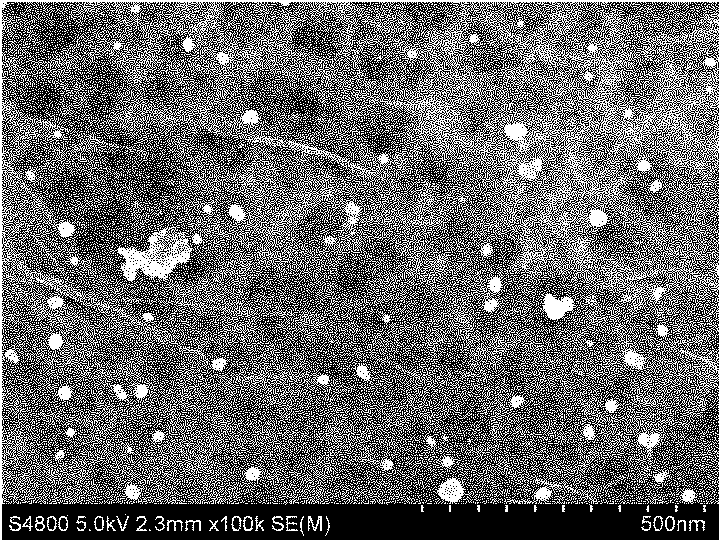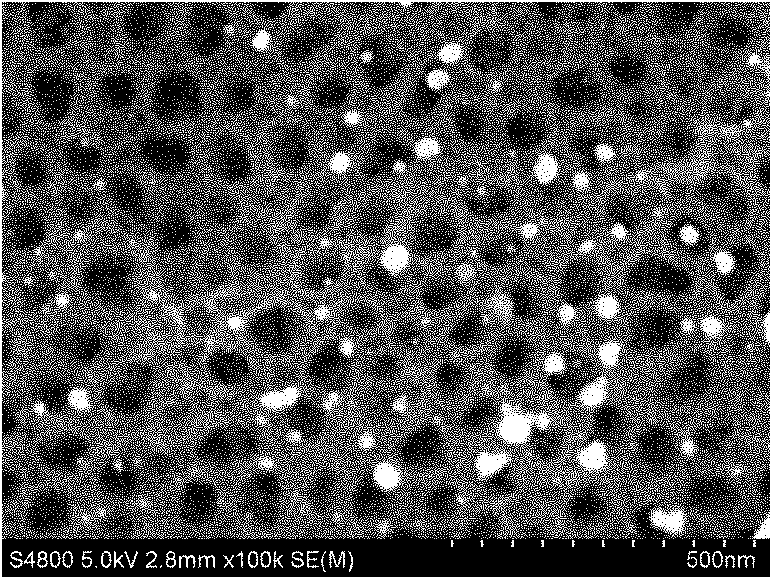Metal-graphene-titanium dioxide nanotube array photocatalyst and preparation and application method thereof
A nanotube array, titanium dioxide technology, applied in the field of composite photocatalysts, can solve the problems of high photo-generated electron and hole recombination rate, low photocatalytic efficiency, and difficulty in effectively degrading organic pollutants.
- Summary
- Abstract
- Description
- Claims
- Application Information
AI Technical Summary
Problems solved by technology
Method used
Image
Examples
Embodiment 1
[0024] (1) Preparation of titania nanotube arrays
[0025] ① Grind the surface of the base material titanium sheet, clean it and set aside;
[0026] ② Preparation of inorganic electrolyte: the electrolyte is composed of 0.1MNaF and 0.5MNaHSO 4 The composition of the aqueous solution;
[0027] ③Under the condition of 15V DC voltage, using pure titanium sheet as the anode and platinum sheet as the cathode, the titanium dioxide nanotube array is electrolyzed in the electrolyte;
[0028] ④The titania nanotube array prepared above was calcined under aerobic conditions at 500°C for 3 hours to crystallize it into a titania nanotube array.
[0029] (2) Preparation of graphene (RGO) film
[0030] ① Preparation of graphene oxide aqueous dispersion: graphene oxide is dispersed in Na2HPO4 buffer solution with pH = 9.18, and ultrasonicated for 30 minutes before use;
[0031] ②Using the titanium dioxide nanotube array electrode as the working electrode, the platinum electrode as the cou...
Embodiment 2
[0042] In embodiment 1, AgNO3 is replaced by PdCl2, and all the other are the same as embodiment 1.
[0043] Under the same conditions in Example 1, the photocatalytic degradation of Pd-RGO-TiO2 nanotube array 2, the degradation efficiency of 4-dichlorophenoxyacetic acid is 91.33%, the direct photodegradation efficiency is 6.72%, pure TiO2 nanotube array photocatalytic The degradation efficiency is 43.99%, the photocatalytic degradation efficiency of Pd-TiO2 composite is 47.88%, and the photocatalytic degradation efficiency of RGO-TiO2 is 78.98%.
PUM
 Login to View More
Login to View More Abstract
Description
Claims
Application Information
 Login to View More
Login to View More - R&D
- Intellectual Property
- Life Sciences
- Materials
- Tech Scout
- Unparalleled Data Quality
- Higher Quality Content
- 60% Fewer Hallucinations
Browse by: Latest US Patents, China's latest patents, Technical Efficacy Thesaurus, Application Domain, Technology Topic, Popular Technical Reports.
© 2025 PatSnap. All rights reserved.Legal|Privacy policy|Modern Slavery Act Transparency Statement|Sitemap|About US| Contact US: help@patsnap.com



